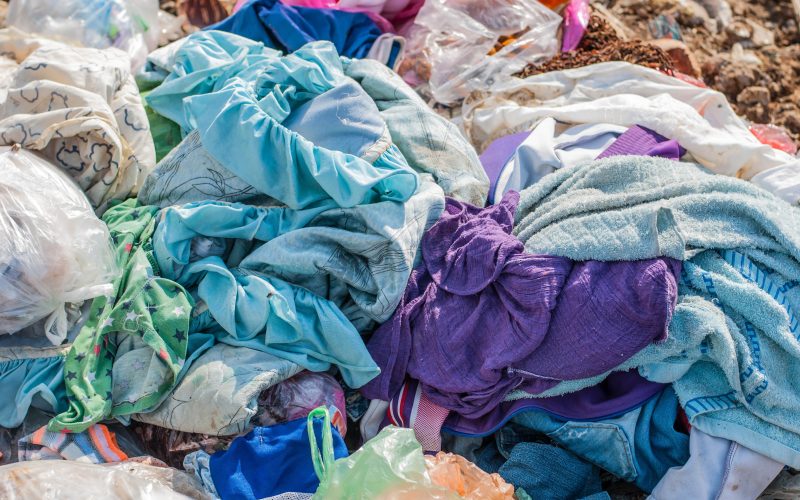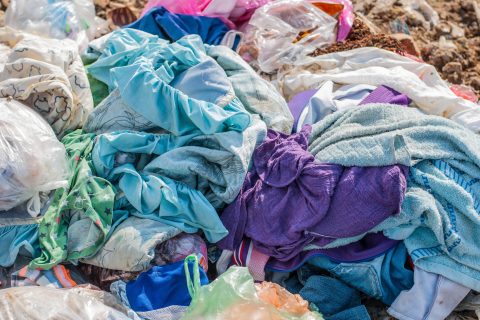Donating your unwanted clothes to Goodwill is a good way to declutter, but they don’t always end up where you think they will. Allyson Chiu is a reporter focusing on climate solutions for The Washington Post, and she joins host Krys Boyd to discuss the pipeline from thrift stores to salvage companies to incineration and landfills to find out where all our clothes ultimately land. Her article is “What really happens to your clothes after you donate them.”
Bonus Blog: How to be climate conscious when buying new clothes
—By Cristin Espinosa, Digital Producer for Think
You might think of donating your used clothes as a charitable, climate-saving solution. Ultimately, though, some of those clothes will still end up in landfills.
The good news is there are ways to prevent clothes from being tossed out, and it starts from the moment you buy something new.
Our guest, Allyson Chiu, says there are plenty of ways to extend the lifespan of your clothes. Old clothes that are stained or don’t fit can also be repurposed for use while cleaning, cooking, or doing other messy tasks around the house.
When you’re out shopping, Chiu suggests thinking about how you might repurpose or reuse something once you’ve had it for a while and it’s no longer wearable.
“We should be thinking about it almost as a marriage, which really sounds too intense,” Chiu says. “But the idea behind that is, we’re thinking about a long-term commitment to this item of clothing and not only how you’re going to be interacting with it in your life, but then, you know, what will you do with it at the end?”
Returning clothes can also come at a cost to the climate. Some retailers may toss out returned clothes that they aren’t able to sell. But regardless of whether returned clothes are sold again, there can still be a negative impact on the environment.
“The concern around returns can sometimes be more linked to the transportation and emissions of having to be shuttling items all over the place,” Chiu says. “We’ve seen in some of the research that returns will obviously increase the amount of trucks that have to come pick up your item or take your item somewhere else. And it’s just one area where you could easily reduce that emissions impact if you didn’t return your item.”
You can also think about which shipping option you choose when you order something online. Fast shipping can have a larger carbon footprint than you might think.
“If we select fast shipping, there’s a possibility that that means your item gets loaded on a plane, which has way more emissions than a delivery truck,” Chiu says. “If you’re ordering multiple items and you select the fastest shipping option on all of them, they might arrive at different times. So, then you have a truck that’s coming to you, coming to your neighborhood more than it has to, compared to if you selected, ‘I’m OK waiting.’”
Learn more about how to keep climate change in mind the next time you buy new clothes by listening to our podcast above.


